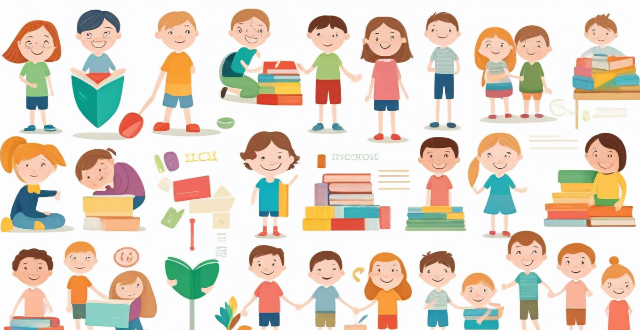Creating an inclusive classroom for students with diverse special education needs is essential. Strategies include differentiated instruction, Universal Design for Learning (UDL), collaborative learning, positive classroom culture, and professional development. These approaches ensure equal opportunities for all students to learn and thrive.

Creating an inclusive classroom environment for students with diverse special education needs is essential to ensure that all students have equal opportunities to learn and thrive. Here are some strategies to create an inclusive classroom:
1. Differentiated Instruction
Differentiated instruction involves tailoring teaching methods, materials, and assessments to meet the individual needs of each student. This approach allows students with diverse special education needs to access and engage with the curriculum at their own pace and level of understanding.
Examples of Differentiated Instruction:
- Tiered Lessons: Offer three levels of difficulty for a given task or activity.
- Flexible Grouping: Group students based on their interests, learning styles, or abilities rather than their academic performance.
- Use of Technology: Incorporate assistive technology tools such as text-to-speech software, magnifiers, or modified keyboards.
2. Universal Design for Learning (UDL)
UDL is a framework that seeks to provide multiple means of representation, action, and engagement for all students. By applying UDL principles, educators can create accessible and flexible learning environments that cater to a wide range of learners, including those with disabilities.
Key UDL Principles:
- Multiple Means of Representation: Ensure information is presented in various formats, such as visual, auditory, or kinesthetic.
- Multiple Means of Action and Expression: Allow students to demonstrate their knowledge through different modes like writing, speaking, or using technology.
- Multiple Means of Engagement: Foster motivation and interest by providing choices in how students interact with the content and each other.
3. Collaborative Learning
Encouraging collaboration among students promotes mutual respect, understanding, and support, which is crucial for an inclusive classroom. When students work together on projects or activities, they learn from one another and develop empathy for their peers' unique challenges.
Strategies for Collaborative Learning:
- Partner Work: Assign students to work in pairs or small groups on tasks where they can share ideas and help each other.
- Role Assignments: Give students specific roles within group activities to ensure everyone has a meaningful contribution.
- Feedback Mechanisms: Teach students how to provide constructive feedback to their peers in a respectful manner.
4. Positive Classroom Culture
A positive classroom culture is built on mutual respect, kindness, and acceptance. It is essential to establish clear expectations for behavior that emphasize inclusion and celebrate diversity.
Cultivating Positive Classroom Culture:
- Rules and Routines: Create rules that promote respect and cooperation among students. Consistently enforce these rules to maintain order and safety.
- Celebratory Events: Plan events that highlight cultural diversity and acknowledge individual achievements.
- Open Dialogue: Encourage open discussions about disability awareness and inclusion to foster understanding and empathy among students.
5. Professional Development
Teachers play a vital role in creating an inclusive classroom. Therefore, ongoing professional development is necessary to equip educators with the knowledge and skills needed to support diverse learners effectively.
Professional Development Opportunities:
- Workshops and Training Sessions: Attend workshops focused on special education strategies, assistive technology, and UDL principles.
- Peer Observations: Visit other inclusive classrooms to observe best practices firsthand.
- Mentorship Programs: Connect with experienced teachers who can offer guidance and support in implementing inclusive practices.
In conclusion, creating an inclusive classroom requires a combination of differentiated instruction, UDL principles, collaborative learning, positive classroom culture, and professional development. By implementing these strategies, educators can ensure that all students have equal opportunities to succeed and feel valued within the learning environment.